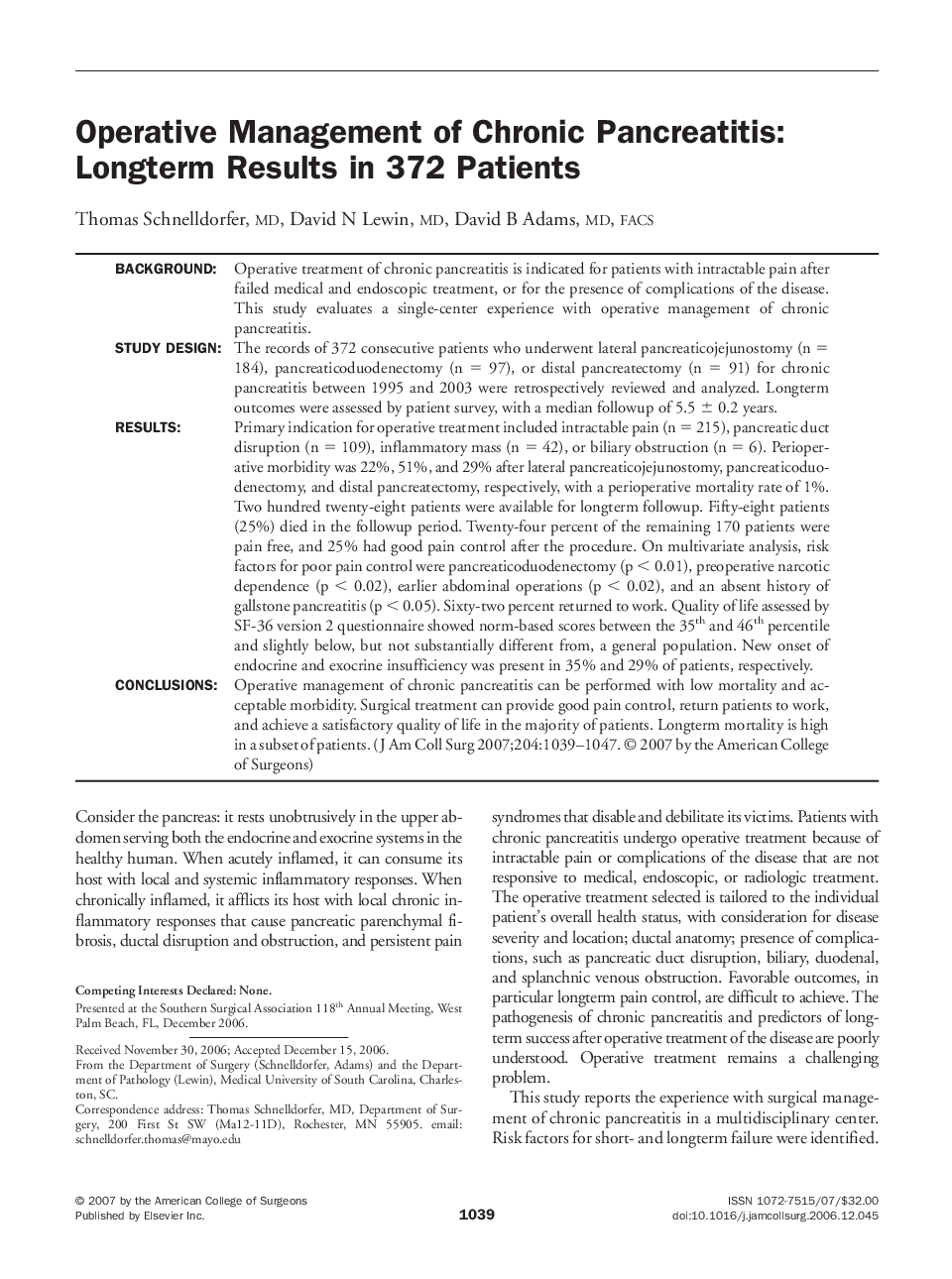| Article ID | Journal | Published Year | Pages | File Type |
|---|---|---|---|---|
| 4294585 | Journal of the American College of Surgeons | 2007 | 7 Pages |
BackgroundOperative treatment of chronic pancreatitis is indicated for patients with intractable pain after failed medical and endoscopic treatment, or for the presence of complications of the disease. This study evaluates a single-center experience with operative management of chronic pancreatitis.Study DesignThe records of 372 consecutive patients who underwent lateral pancreaticojejunostomy (n = 184), pancreaticoduodenectomy (n = 97), or distal pancreatectomy (n = 91) for chronic pancreatitis between 1995 and 2003 were retrospectively reviewed and analyzed. Longterm outcomes were assessed by patient survey, with a median followup of 5.5 ± 0.2 years.ResultsPrimary indication for operative treatment included intractable pain (n = 215), pancreatic duct disruption (n = 109), inflammatory mass (n = 42), or biliary obstruction (n = 6). Perioperative morbidity was 22%, 51%, and 29% after lateral pancreaticojejunostomy, pancreaticoduodenectomy, and distal pancreatectomy, respectively, with a perioperative mortality rate of 1%. Two hundred twenty-eight patients were available for longterm followup. Fifty-eight patients (25%) died in the followup period. Twenty-four percent of the remaining 170 patients were pain free, and 25% had good pain control after the procedure. On multivariate analysis, risk factors for poor pain control were pancreaticoduodenectomy (p < 0.01), preoperative narcotic dependence (p < 0.02), earlier abdominal operations (p < 0.02), and an absent history of gallstone pancreatitis (p < 0.05). Sixty-two percent returned to work. Quality of life assessed by SF-36 version 2 questionnaire showed norm-based scores between the 35th and 46th percentile and slightly below, but not substantially different from, a general population. New onset of endocrine and exocrine insufficiency was present in 35% and 29% of patients, respectively.ConclusionsOperative management of chronic pancreatitis can be performed with low mortality and acceptable morbidity. Surgical treatment can provide good pain control, return patients to work, and achieve a satisfactory quality of life in the majority of patients. Longterm mortality is high in a subset of patients.
